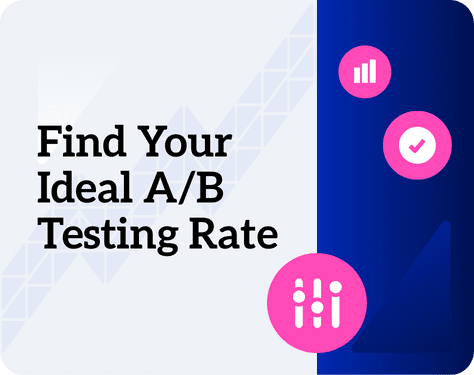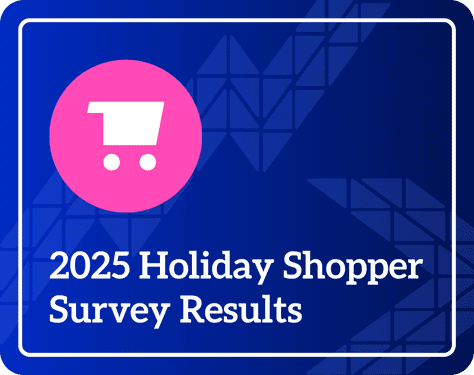It doesn’t take much to lose an online sale.
Case in point: Bad site search costs retailers over $300 billion a year. And that’s just one aspect of your digital experience.
Not providing enough product information is another sales killer and a major reason for returns. Additional factors like product ratings and reviews, personalized product recommendations, and an easy-to-complete checkout process with no hidden costs are all important conversion drivers.
Understanding how these elements work together—and improving them so that your website converts more—requires plenty of trial and error. Conversion rate optimization (CRO) is the process that’s evolved to help retailers achieve this magical conversion formula, but it goes far beyond simple A/B testing and basic analytics. Successful companies understand that improving conversion rates requires a deep understanding of customer behavior and a systematic approach to testing and optimization.
What is Conversion Rate Optimization & Why Does it Matter?
Conversion rate optimization is the process of optimizing your website or app to increase a desired action (e.g., conversion) which may be a sale, download, signup, subscription or any other action you want a website visitors to take. The formula for determining conversion rate is:
Conversion Rate = Number of Conversions / Total # of Visitors x 100
If you have 5000 visitors in a month and 200 of them convert, that would look like this:
200/5000 x 100 = 4%
Creating a CRO strategy is important because it gives you a way to fine-tune your website to improve sales or leads or downloads—whatever goal you tie to performance. A high conversion rate signals that your website is working for your visitors. From a design perspective, that means it’s intuitive, useful, and visually appealing. From a functionality perspective, it means elements like load time, errors, and security are optimized.
The elements of design and function work together to impact your web site’s conversion rate. Finding the perfect mix of both is what CRO is all about. It’s important because when you get it right, it equals many more conversions.
For retailers, even small changes can improve your ecommerce conversion rates and, consequently, your sales. It’s the lever you have the most control of because it uses your existing website traffic. Increasing your conversion rate from 1% to 2% can double your sales from the same amount of website traffic without increasing investment in paid media or PR.
What is a Good Conversion Rate?
Most retailers have conversion rates of about 2%, but this varies widely by category. On the lowest end of the scale, the Luxury Handbag category has a conversion rate of .4% versus Beauty & Makeup which is at 2.7%. This makes sense since high-end handbags can cost thousands of dollars versus cosmetics which obviously cost much less than this. The following chart from Statista breaks down conversion rate by selected verticals for Q2 2024:
Source: Statista
These numbers only tell part of the story. Your “good” conversion rate depends on your industry, audience, and goals. It’s important to understand your baseline conversion rate first, then use conversion rate optimization best practices to implement changes to improve it.
Conversion Rate Optimization Best Practices
1. Use content personalization to improve sales
Not all shoppers will respond to the same thing. A busy parent shopping for back-to-school supplies has very different needs than a teacher stocking their classroom. Platforms like Monetate allow retailers to analyze visitor behavior and preferences, then adapt experiences in real-time to match an individual’s shopping profile or behavior. For example, if Bob spends time browsing writing supplies for his kindergartner, his homepage might show a selection of pencils and erasers. But Clarice—a 7th grade science teacher—might see beakers, test tubes, and petri dishes.
Monetate client Wolseley, a UK-based heating, cooling, and plumbing supplier saw a 100% increase in revenue per session (RPS) and a 163% increase in conversion rates when they implemented automated personalization on their home page. This AI-personalized home page experience served unique homepage content based on visitor data.
2. Make site search work harder for conversions
Your site’s search bar is a critical conversion tool—and often the starting point when a visitor arrives at your website. When optimizing for conversions, look to site search as a key area for improvement. Make sure the search bar is easy to spot and available on every page. Test different locations, designs, and layouts to see what impact changes in search bar appearance and position have.
Strive to improve search functionality. AI-powered search, which uses natural language processing and machine learning to understand shopper intent, can handle misspellings and suggest relevant products even when customers don’t know exactly what they need. Optimizing site search should incorporate both design and functionality to reduce frustration and help shoppers find products faster.
3. Make your PDPs do some of the heavy lifting
Product detail pages (PDPs) are where browsing turns into buying. These pages are pivotal conversion hubs, but can overwhelm (or underwhelm) visitors when there’s too much or too little detail about a product. As with the homepage, test different page layouts to find what works best for your customers. Look at variables like image placement, product description length, and the position and design of the “Add to Cart” button.
Great product images can make all the difference when motivating a shopper to close the sale. Per RetailDive, 40% of consumers are more likely to purchase when video is present on product pages. Test different visual elements like showcasing items from multiple angles, product videos, and 360-degree views. Make product information scannable and test how different elements like headers and bullet points work to improve conversion (or not).
4. Cater to mobile shoppers
Over three-quarters of retail traffic comes from smartphones, so optimizing mobile experiences should be at the top of your CRO checklist. Test elements like search bar placement, CTA design, load time, button text, and the entire checkout process (we’ll go into more detail about that below.) Solicit customer feedback to see what people want—and where they’re frustrated. Since so much shopping occurs on mobile devices, fixing issues that hinder sales will lift your overall conversion rate. It’s one of the best ways to generate more online orders and increase revenue.
5. Social proof elements sell more stuff
According to Capital One Shopping research, pretty much all consumers read online reviews before they buy something. Reviews influence 93% of our buying decisions. Product reviews and ratings are elements of “social proof”—along with customer testimonials, user-generated content, and real-time notifications that showcase the popularity of a given item.
Adding social proof elements helps build confidence and reduce purchase anxiety. They work with components like high-quality images and clear CTAs to move shoppers through the purchase journey. Adding social proof and optimizing how it appears can substantially improve conversion rates. Just ask Monetate client Toolstation. Adding social proof elements to product pages improved Toolstation’s conversion rate by 2% and drove a 30X ROI.
6. Checkout needs to be seamless
By the time shoppers reach the virtual checkout lane, they’re eager to be done. Keeping checkout as simple and intuitive as possible reduces shopping cart abandonment. According to OptiMonk, a long checkout process is one of the top reasons that people ditch their carts. Other reasons include a lack of trust that credit card information will be kept secure, lack of transparency with order totals, and website errors.
Checkout CRO should focus on reducing the things that prevent people from completing their orders, while testing elements of the entire process to see how they impact conversion rates like removing unnecessary form fields and testing multiple payment methods.
7. Testing is the foundation of CRO
Successful CRO requires ongoing testing to tell you (based on data) what’s working and what isn’t. Without a comprehensive testing approach, you’re just throwing stuff at the virtual wall. A/B and multivariate testing lets you compare different versions of web pages, content, and functionality to see which performs better. Dynamic testing takes this a step further by automatically optimizing toward your conversion goals in real-time, eliminating the need to wait for statistical significance. The model updates regularly to dynamically adjust based on visitor behavior.
How Can a Personalization Platform Improve My CRO?
A personalization platform like Monetate provides the tools needed to support CRO strategies and optimize website experiences at the individual level. Monetate’s experimentation features including A/B/n testing, dynamic testing, and feature experimentation let you test different elements to see what drives conversions..
This systematic approach to testing and personalization creates experiences that convert more visitors into customers. Monetate makes it easy to adapt content, messaging, and promotions across all digital channels. It adjusts the experience based on individual shopping behavior and preferences, ensuring that the buying journey works well on all devices including smartphones and tablets.



